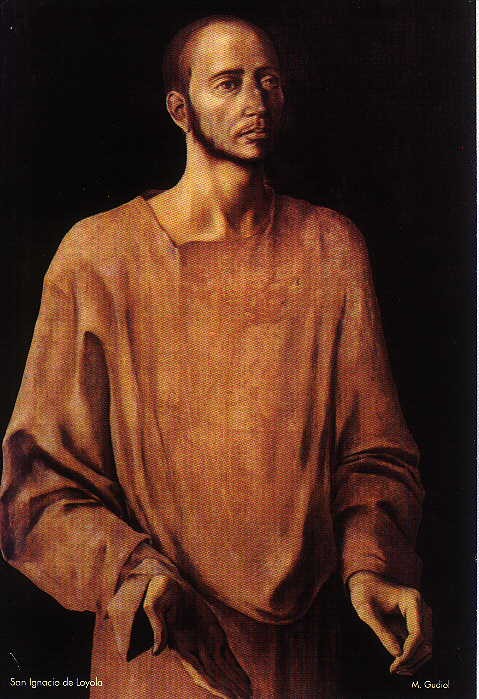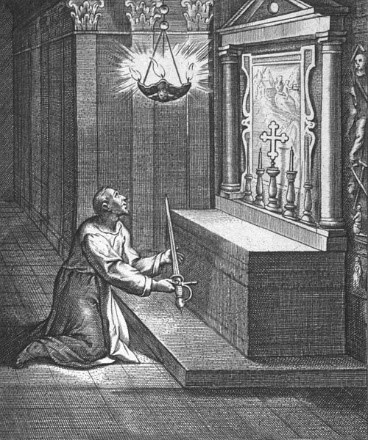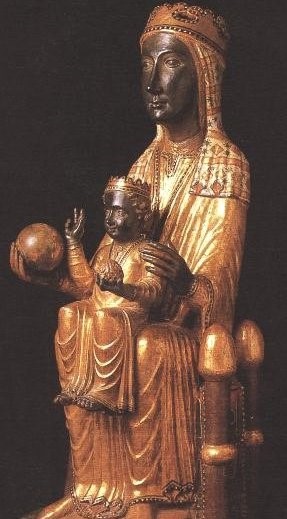LOYOLA TO MONTSERRAT 1491 – 1522
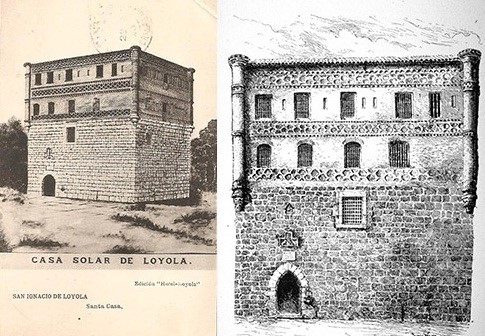
A drawing of Casa Loyola as it would have appeared in the time of St. Ignatius. It is located in Azpeitia, Gipuzkoa in the Basque region. (It is now surrounded by many religious buildings and within the area there is a basilica.) On the right is the identifying symbol of the family of the casa – two wolves at a pot of food, enough food to feed all visitors. This stone is set above the main door, which was on the left lower corner of the casa.
Ignatius was born on Christmas eve in 1491, the youngest of 13 children. He was baptized Inigo Lopez.
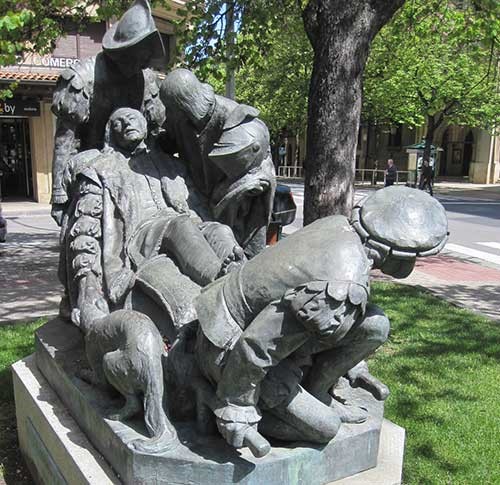
In 1509 Ignatius began a military career. He was engaged in much warfare under the Duke of Navarre. It was during the defense of the citidel of Pamplona in 1521 that Ignatius suffered a serious leg wound that left him incapacitated. Ignatius that they carried the wounded soldier back to his home in Loyola. It was a distance of about 17 km over difficult terrain.
The recovery period was long and quite difficult. On at least two occasions he had to go through very painful operations to properly fix and set his wounded leg. His desire was to read a number of the popular novels of the day, adventure and romance, tool while away the time of his confinement and in action. The only two books found in the house were the life of Christ and a book of the lives of the saints. With nothing else to do, Ignatius read and reread these two volumes. These books changed his life.
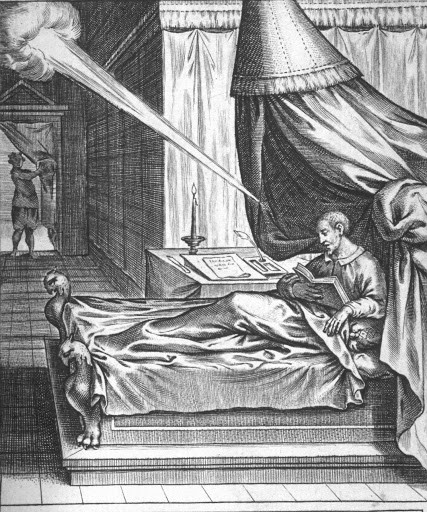
God’s grace was touching him. He felt Much consolation in reading about Jesus and the holy saints; more peace and consolation than what he felt when he was thinking of the life of a gallant and dashing Knight. In this time, it seemed he already experienced a number of visions. He felt that he saw most clearly mother Mary and the Child.
With this, he resolved to make a pilgrimage to the Holy Land and in imitation of the Saints to live a life of poverty and chastity and to make every effort to convert the peoples in those regions.
And so it was, in spite of the many protest on the part of his family to dissuade him, Ignatius began his pilgrimage from Azpetia to Jerusalem.

Ignatius left the casa sometime in February, 1522. He rode on horseback. He was accompanied by his brother. Together they made an overnight vigil at the shrine of Our Lady at Aramtzazu about 15 kilometers from Loyola. The next day his brother returned home and Ignatius continued on his pilgrimage.
The journey from Arantazu to Montserrrat took more than a month. It was generally uneventful except for the encounter that Ignatius had with a Muslim traveler where there was sharp disagreement about the Virgin Mary.
In late March Ignatius arrived in the vicinity of Montserrat, possibly at Manresa near Barcelona. In that small town he bought a pilgrim’s garment made of sackcloth and he gave his fine garments to a beggar. (which caused some difficulty for the better).
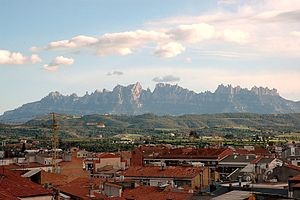 The picture is of the Montserrat range as seen from Manresa.
The picture is of the Montserrat range as seen from Manresa.
Ignatius had now reached the second step of his journey to Jerusalem. He was to pay his homage to the Black Madonna at the Benedictine Abbey in Montserrat. As he mentioned in his Autobiography, he spent time in prayer and made his general confession. He took three days to write out all that he wanted to bring forward seeking forgiveness for the sins of his past life. The next day he would receive the sacrament of the Holy Eucharist.
On the evening of March 24, 15,22, he began his knightly vigil before the altar of our Lady. This was the eve of the feast of Mary’s Annunciation.
The image shows Ignatius already in his pilgrim’s garb offering his sword to his Lady – a moment of consecration.
The pilgrim’s clothing would be his clothing for a long period of time – as he journeyed to Jerusalem and later would spent much time in Manresa and Barcelona..
For sure, deep in Ignatius’ mind was his intention to make the final part of his pilgrimage – to the land of the Lord Jesus in Jerusalem and there to stay for his mission for God’s glory.
Reflection and Prayer
Ignatius was much like each one of us – trying to find our place in the world.
The way was clear for him – born into a family of minor nobility a career as a military man was most appropriate.
And so, that is what he did – and quite successfully, it seems.
He had some basic human virtues that would do well for him –
most notably, a sense of loyalty in a life of service.
We see that helped bring Ignatius to the spiritual leadership that was his great grace.
